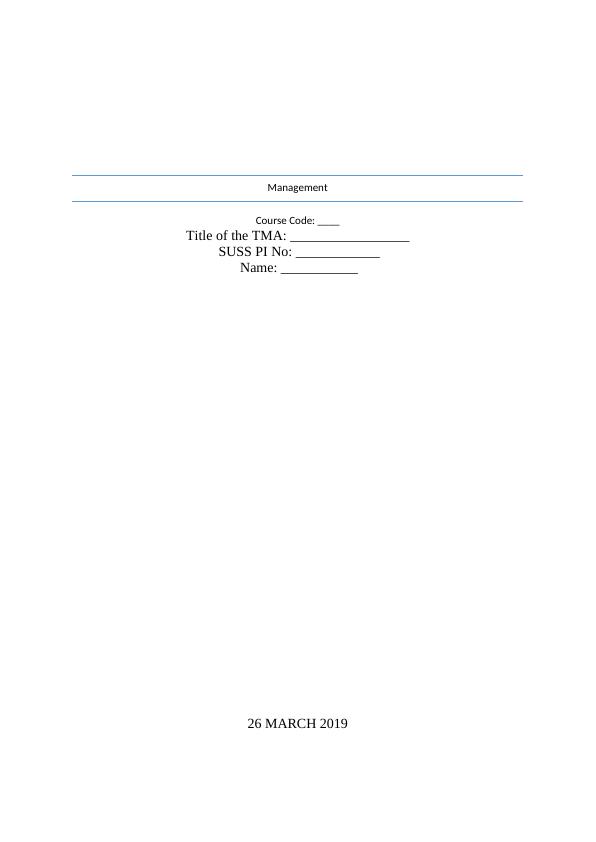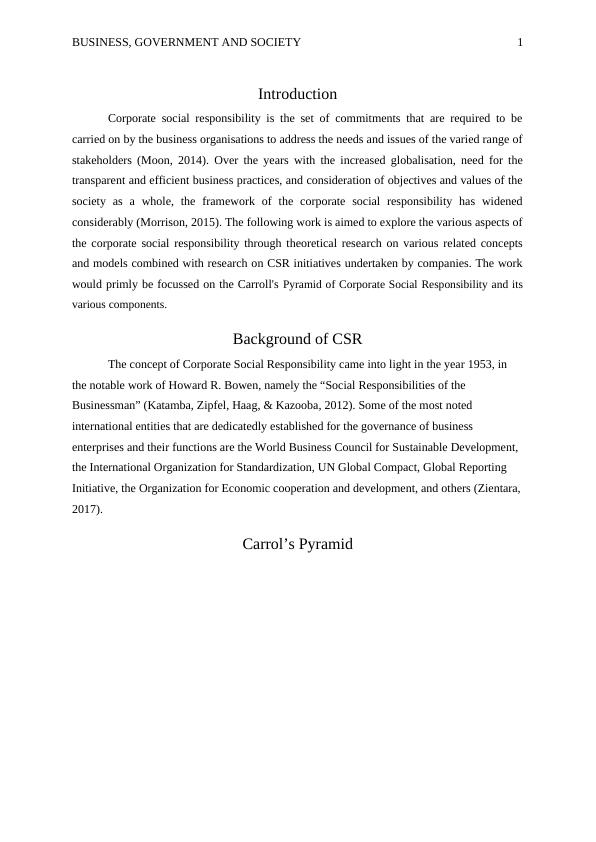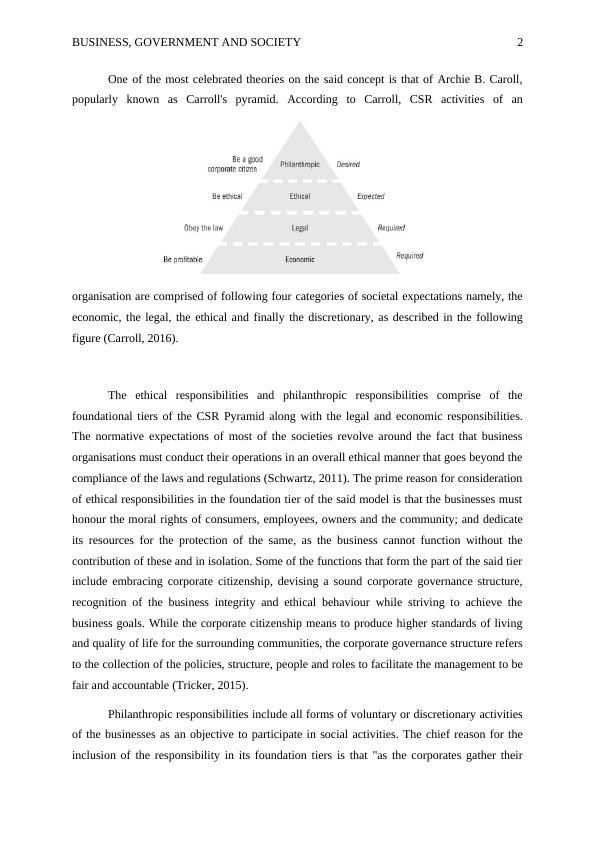Corporate Social Responsibility: Exploring Carroll's Pyramid
This is Tutor-Marked Assignment 01 for the course SSC205e Business, Government and Society. The assignment requires a presentation and has a word limit of 1,500 words. The assignment is worth 25% of the final mark and must be submitted through Turnitin by the due date.
8 Pages2227 Words240 Views
Added on 2023-04-20
About This Document
This article explores the various aspects of corporate social responsibility (CSR) through theoretical research on Carroll's Pyramid of CSR and its components. It discusses the background of CSR, Carroll's Pyramid, current trends in CSR initiatives, and provides examples of corporate initiatives by companies like Singtel, OCBC Bank, and DBS Group Holdings. The article highlights the importance of CSR in modern business organizations and its impact on society.
Corporate Social Responsibility: Exploring Carroll's Pyramid
This is Tutor-Marked Assignment 01 for the course SSC205e Business, Government and Society. The assignment requires a presentation and has a word limit of 1,500 words. The assignment is worth 25% of the final mark and must be submitted through Turnitin by the due date.
Added on 2023-04-20
ShareRelated Documents
End of preview
Want to access all the pages? Upload your documents or become a member.
Exploring the Various Aspects of Corporate Social Responsibility
|7
|2201
|435
Corporate Governance and Ethics
|11
|2680
|442
Corporate Ethics - Case Study
|9
|1920
|279
G4S PLC Corporate Social Responsibility
|9
|2033
|29
corporate social Responsibilities Assignment
|10
|2888
|50
Corporate Social Responsibilities of BHP Billiton Company
|10
|2438
|458



